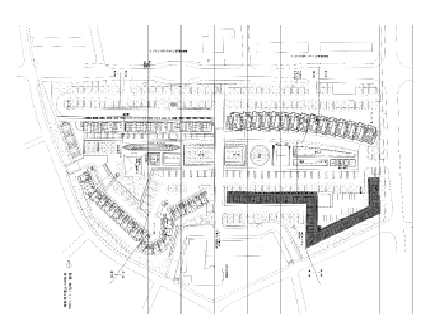Gifu Kitagata
Apartment Building Sejima Wing
Kitagata, Motosu-gun, Gifu Prefecture, Japan
| Notable Features | |
| Modular standardization | |
| Mass customization of spaces | |
| 'Room' as basic building block | |
| L shaped wing design | |
| Double height spaces | |
| Unique rhythmic pattern | |
| Construction waste minimization | |
| Basic Information | |
| Location: Gifu, Japan | |
| Structure : Reinforced Concrete | |
| Building Type: 10-Storey Public Housing Reconstruction | |
| Completion: March 1998 (1994-1998) | |
| Building Area: 584 m2 | |
| Total Floor Area: 4,706 m2 | |
| Architect: Kazuyo Sejima & Associates and Yamasei Sekkei | |
| Overview | |||||||||||||||||||
|
The apartment building is part of a large scale public housing reconstruction project located about 15 minutes from Gifu City by car. Four women architects were selected under the coordination of Japanese architect Arata Isozaki to execute the projects. This L-shaped Wing designed by architect Kazuyo Sejima sits on the south-east part of the site where the idea for the overall layout of the development was to run the buildings around the perimeter. | |||||||||||||||||||
|
| |||||||||||||||||||
|
Site Layout Plan | |||||||||||||||||||
|
| Modular Standardization |
|
The use of
‘room’ as a modular building block is not difficult to
understand in terms of standardization of major building
components in any large scale housing development project. The
basic principle of minimizing construction waste at the design
level is achieved without doubt. |
|
Double-height spaces add characters to both the internal space and rhythmic elevations |
|
|
| Careful manipulation of spaces results in a variety of internal spatial configurations. Monotonous character has been dissolved and varieties generated while allowing the use of standardized components. All in all, it is the building form, internal spatial configurations and facade treatment that determine the resultant appearance of a modular standardized building. |
| Mass Customization of Spaces |
| The generated complex spatial configurations and elevations result in more complicated design and construction process. Each floor and each room thus require additional efforts and attentions from the initial design stages to the management of construction works. Although repetitious design of units and buildings has often been argued as a sound practice in terms of efficiency and economy while generating less construction waste, it shall not limit the possibilities of how we design the environment for ourselves the construction possibilities. Mass customization of spaces and building forms in the context of standardization and waste management become a new challenge. New challenges however demand and encourage the industry’s innovation and ability to move forward. |
|
Mass customization of spaces generates rhythmic elevations yet demands new challenges |
| Conclusion |
|
Resulting from the intention of standardization, modular design however does not necessarily generate monotonous buildings. It is illustrated here that standardization allows not only efficient and economic ways of construction, but also design varieties. If standardization and modular design is one solution to the mounting issue of construction waste, design varieties become the major challenge of tackling the issue. Besides architect’s imagination and innovative approaches to design, design varieties however do require additional efforts on designing every individual "variety". At the construction side, it demands more sophisticated construction management skills and practice. It is therefore both the architects and the contractors responsibilities to take a more proactive and innovative approach towards such a practice. |
| Reference |
|
Levene,
Richard and Fernando Marquez Ceilia ed. "Gifu Kitagata
Apartment Building." Miscellany of others’ opinions and
own prejudices about the World, the Devil and Architecture.
ElCroquis 92 (1998): 138-153. Teramatsu, Yasuhiro ed. JA Yearbook 1998: Competition Results. Japan: Japan Architect, 1999. "Gifu Kitagata Apartments Second Phase." Shinkenchiku:2000 5 (May 2000): 93-109. |
| All images are cited from ElCroquis 92. |

